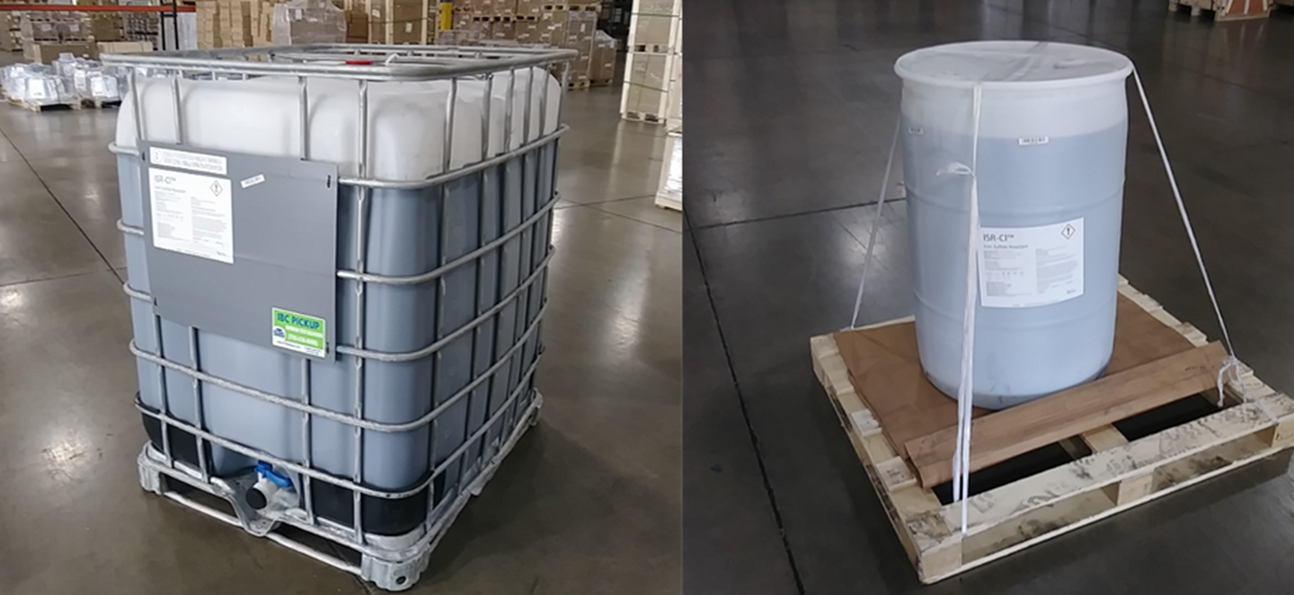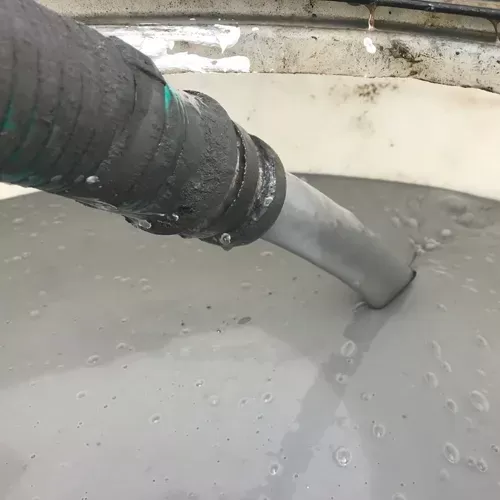ISCR In Situ Chemical Reduction
In Situ Chemical Reduction Amendments
In Situ Chemical Reduction (ISCR) involves the placement of chemical reductants into the contaminated area or in the path of the plume to help change contaminants into less toxic or less mobile forms. ISCR combines both biological processes and ZVI particle driven abiotic pathways to chemically reduce persistent organic compounds such as chlorinated solvents, pesticides and energetics into harmless end products. The most common reducing agent for remediation of chlorinated hydrocarbons, energetics, and some metals/metalloids is zero valent iron (ZVI). The co-injection of ZVI particles with electron donor substrates like EDS-ER™. is a common strategy to encourage both biotic and abiotic degradation pathways of contaminants..
Microscale ZVI Suspensions
TASK™ Sweep Efficiency Agent can be used to suspend microscale zero-valent iron (mZVI). The chemistry allows shear-thinning properties that improve its capability to be adequately distributed in the subsurface. Tersus also provides an “activation” step after injection. When injecting ZVI in a biodegradeable polymer suspension, the ZVI reactions will not occur until the polymer degrades. We can supply an enzyme breaker designed for fluids having a pH of 6.0 or higher. The enzyme breaker is added to the chase water following the injection of the mZVI suspension.
TASK™ Sweep Efficiency Agent can be used to suspend microscale zero-valent iron (mZVI). The chemistry allows shear-thinning properties that improve its capability to be adequately distributed in the subsurface. Tersus also provides an “activation” step after injection. When injecting ZVI in a biodegradeable polymer suspension, the ZVI reactions will not occur until the polymer degrades. We can supply an enzyme breaker designed for fluids having a pH of 6.0 or higher. The enzyme breaker is added to the chase water following the injection of the mZVI suspension.
Iron Sulfide Reagent (Tersus ISR-Cl)
Sulfide-modified zero-valent iron is attracting more attention due to its ability to achieve much higher contaminant removal efficacy than unmodified ZVI due to its selectivity to pollutants over water. “For dechlorination, sulfidation not only inhibits the reaction between Fe(0) and H2O but creates a nucleophilic zone on the particle surface which is favorable for β-elimination” (Yiming Su, Gregory V. Lowry, David Jassby, and Yalei Zhang, 2019).
Without sulfidation, ZVI will generate both H2 to promote biological processes and electrons for abiotic pathways. With sulfidation, the production of electrons for abiotic pathways will dominate the reactions.
Sulfide-modified zero-valent iron forms ferrous sulfide (FeS) which promotes the abiotic pathways. FeS (Tersus’ ISR-Cl) is highly reactive with chlorinated organic compounds. Tetrachloroethene (PCE) is mainly reduced by FeS to acetylene via β-elimination (dominating reaction), to trichloroethene (TCE) via hydrogenolysis, and to 1,1-dichloroethene (DCE) via α-elimination; TCE transforms to acetylene also via β-elimination (dominating reaction) and to DCE via hydrogenolysis (Jeong et al. 2007a, b).
The point of Tersus ISR-Cl is to pr omote the same abiotic pathways that sulfidated ZVI promotes. ISR-Cl is a liquid iron-based reagent that mimics naturally occurring biogeochemical reduction of solvents in aquifers. Adding this product to your aquifer quickly creates conditions that promotes abiotic and biotic activity that degrades chlorinated ethenes, ethanes, and precipitates toxic metals. The product has an ORP of -700 to -1,300 mV. Injecting this liquid iron sulfide solution is easier than directly adding a solid material, so better subsurface distribution is possible, including situations with lower permeability. The cost for ISR-CL is also typically less than sulfidated ZVI. The product can also be used in combination with ZVI and organic hydrogen donors.

Benefits Metal-Assisted Bioremediation and How They Are Attained
-
Low DO and ORP (< -200 mV): ZVI and/or ISR-Cl
-
Enhanced bacterial populations; faster degradation: KB-1® and KB-1® Plus Bioaugmentation Cultures
-
Parallel abiotic degradation, Elimination of inhibitory contaminants (1,1,1-TCA): ZVI and/or ISR-Cl
-
Addresses recalcitrant compounds (DCM, 1,2-DCA): KB-1® Plus
-
Can address DNAPL: ZVI
-
Abundant hydrogen (H2) for biotic degradation: EDS-ER™ and ZVI
-
Complete degradation to ethene: ZVI, KB-1® and KB-1® Plus Bioaugmentation Cultures
Learn More
Is ISCR the right solution for your contamination concern? Find out here. Have questions or want to explore some ideas? Contact Us to learn how we can put together a money saving program to get your project over the finish line. If you currently have a project and need a remediation solution now, request a site evaluation by supplying us with the appropriate site information at this link. Our skill and experience implementing in situ bioremediation along with in situ chemical reduction creates high-value solutions to complex groundwater and soil contamination and related issues at a lower cost. Tersus welcomes the opportunity to work with you and your team help you successfully plan and execute your next project.
